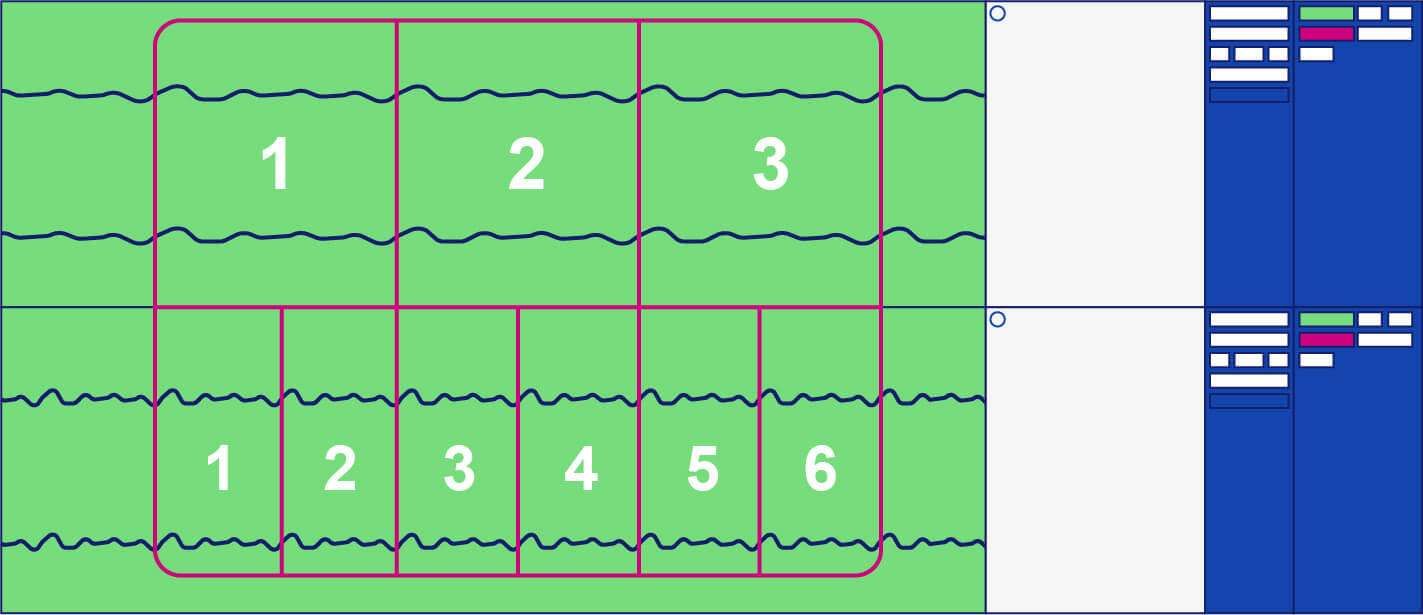What is granular synthesis and how does it work? Synthesis for beginners
Granular synthesis is one of the most digital forms of synthesis there is.
Granular really shines at creating alien-sounding landscapes, complex tones, and other sounds that an analog synthesizer can’t deliver. Granular involves breaking sound down into pieces, and those bits of audio can be tiny bite-size fragments of the original sound.
Sampling is at the heart of granular synthesis. Time-stretching, chopping, looping, and applying effects are commonplace in music production, and granular synthesis takes them to the next level. As a result, granular synthesis lets you create new tones, fascinating textures, and entire soundscapes.
Granular synthesis delivers the best results when the original sample has plenty of timbral variety. However, granular is perhaps a more intimidating technique of synthesis. Be that as it may, it’s definitely worth playing around with because the creative possibilities are endless as you’re about to see.
How does granular synthesis work?
Granular synthesis involves cutting a sound or sample into tiny segments known as grains. Through the process of granulation, the sample is diced up into a collection of grains that you can rearrange, individually apply effects to, warp, and more.
Because granular synthesis has sampling at its heart, it’s the timbre of the original sample that has a heavy hand in determining the tone of the granular result.
Akin to wavetable synthesis where a waveform is made up of subtables, granular synthesis cuts audio into grains that you can manipulate and create new sounds. And like wavetable synthesis, modulation brings granular synthesis to life.
Furthermore, each grain can be as short as 1 millisecond or as long as 100 milliseconds! So the number of grains you can cut a sample into depends on the length of each grain relative to the length of the sample.

And unlike wavetable synthesis, granular is fantastic for utilizing randomization. Wavetable synths sound best with modulation that’s smooth so the wavetable and other parameters morph the sound in a fluid manner. In contrast, granular synths can create dynamic-busting sounds, weird effects, and more with randomization.
In any case, the table of chopped samples is called the graintable. And playing each grain in chronological order at the speed of the original sample will give you the sound of the original sample itself.
Despite how intimidating it can be, granular synthesis makes it very easy to create new sounds of all types from old ones. Then you can manipulate their wave shapes, layer them together, loop them, and stretch them too!
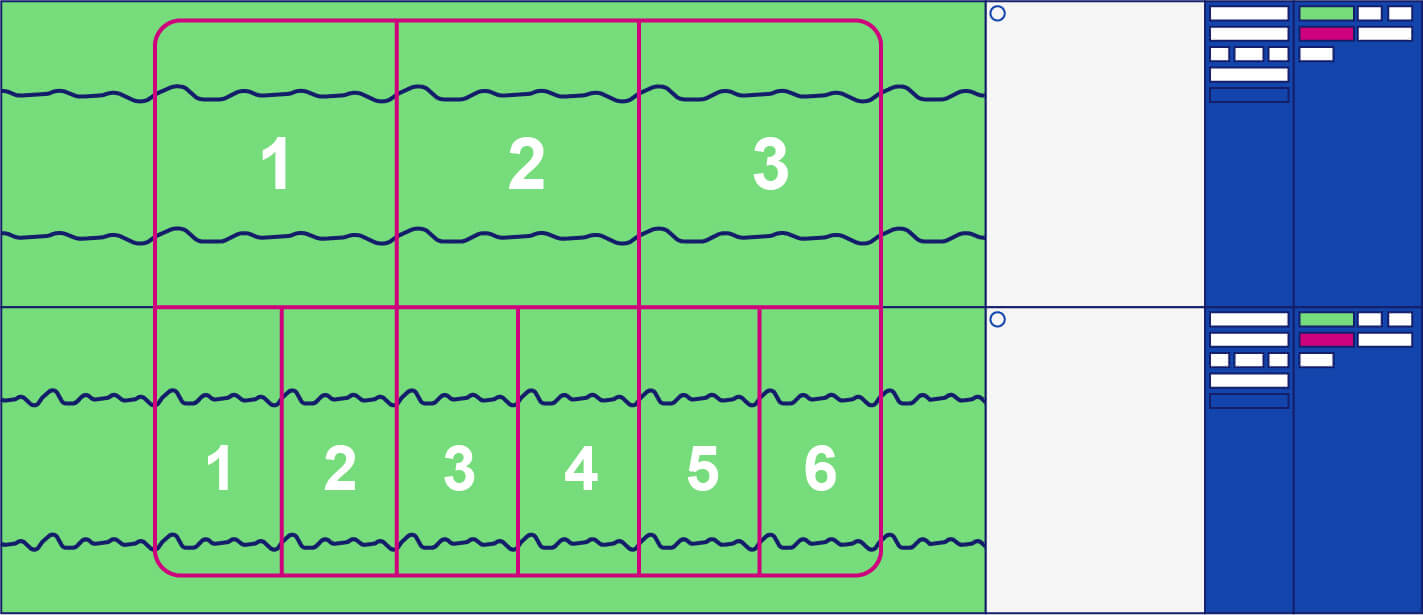
Above is a simple representation of the granulation process. You can see how it’s possible to cut a sample into various numbers of grains by determining the length of each grain relative to the duration of the original audio.
So… what can a granular synth do?
Granular samplers give you tonnes of creative control over the sound. You can think of Granular software samplers like FORM by Native Instruments as a chopping board. In practice, granulation is akin to cutting a cucumber into smaller pieces.
FORM is fantastic for getting started with granular sampling. Simply import a sample, decide how much of the sample you’d like to manipulate, and get creative! We recommend getting FORM or another granular sampler & resampling another instrument.
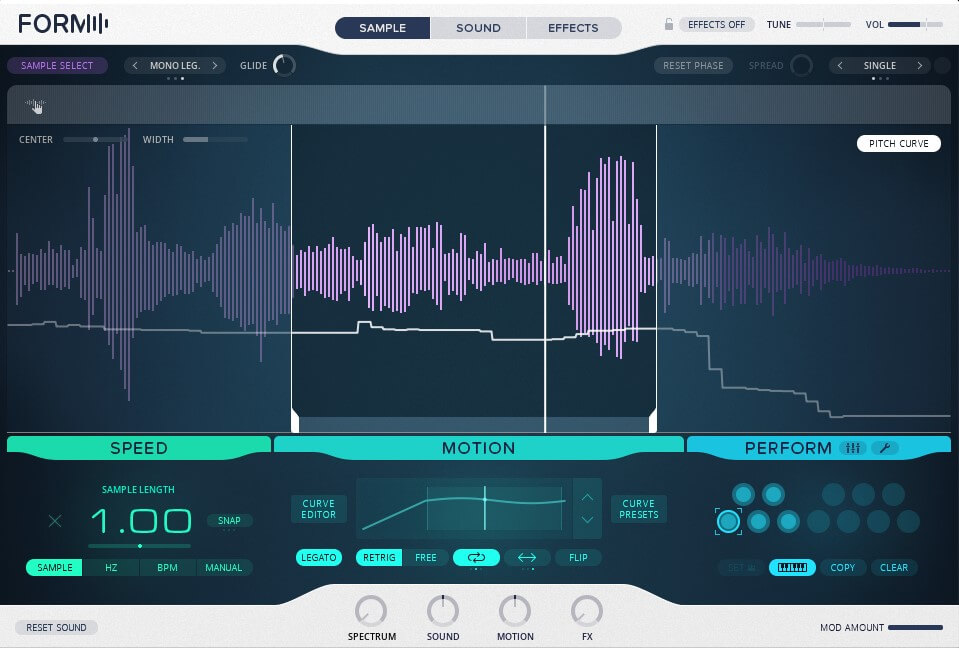
Sample Selection
Whether you use your own sample or a stock one, granular synths allow you to choose a sample from your library. You can drag & drop any sample into FORM’s interface, and you can cut your sound like a cucumber once you loaded.
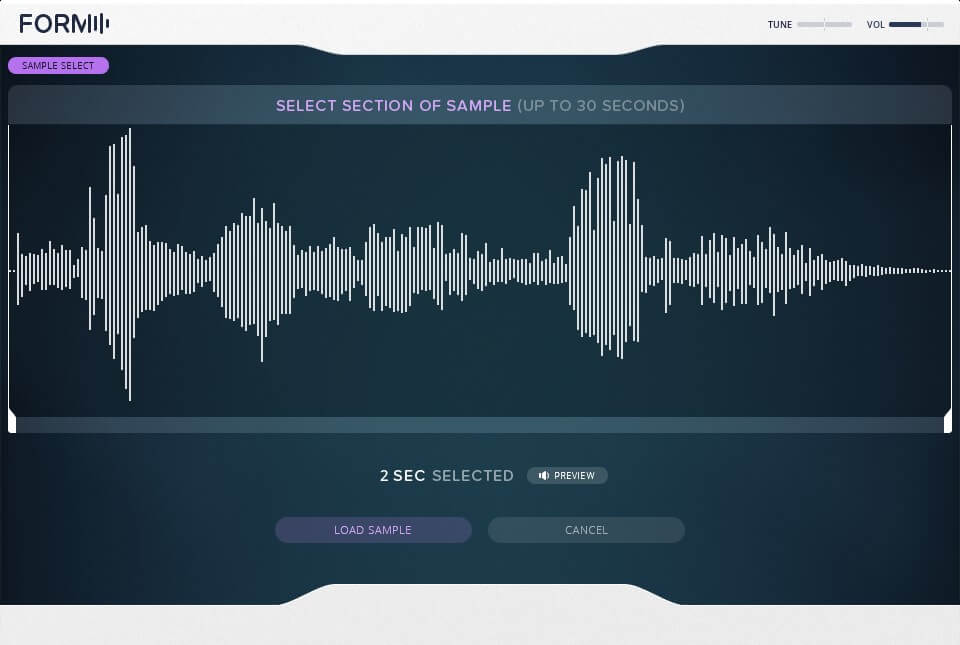
FORM allows you to isolate a specific segment of a sample, meaning you can convert a specific segment into a graintable. And if you don’t like it, you can just reverse the granulation process.
Graintable Motion
Graintable motion is the speed at which your granular synth plays through your graintable. The faster your synth plays, the more complex tones you can create just like higher ratios in FM synthesis.
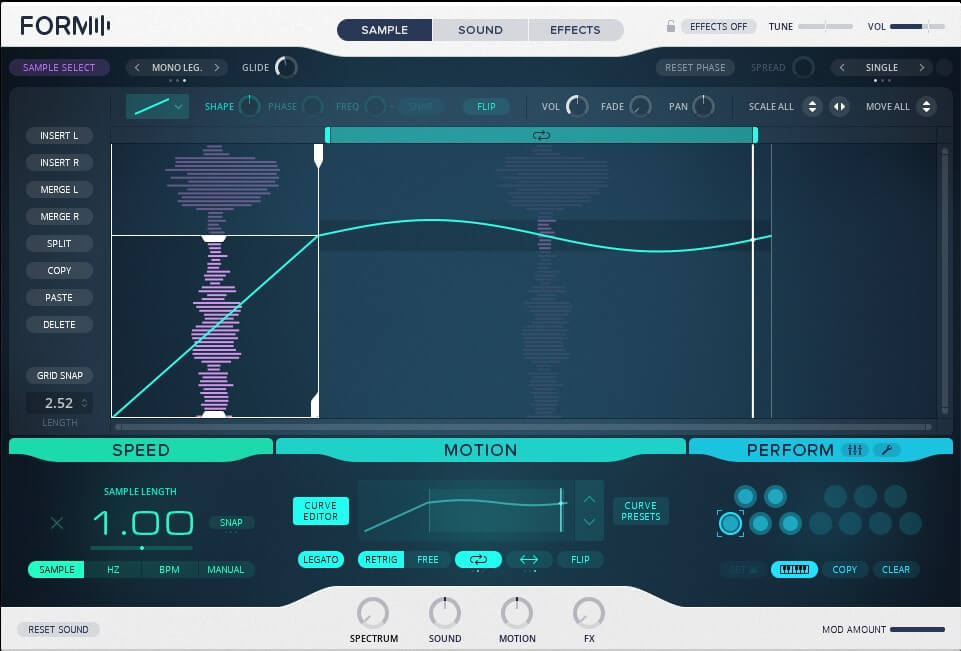
Motion allows you to control how FORM reads and produces your grain table. Different waveshapes are available in the Motion tab for various results.
You may also find the option to manipulate motion direction. This allows you to move backward and forwards through the graintable.
Modulation
Just like the majority of software synths, granular synths like FORM utilizes ADSR envelopes and LFOs as modulation sources that you map to a multitude of parameters.
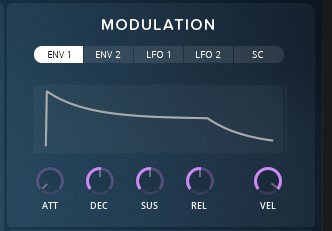
Sample Smoothing
We’ve all had experiences where we find pops & clicks in our audio when we reach the editing stage.
To avoid these in granular VSTs, you can fade the volume of each grain in and out. This is important because the fades that you choose will affect the final tone of your sound.
For a smooth transition between samples, a rounder fade would do the trick. Using a sharper shape gives you a sharper sound.
Grain Shape
Many granular synths such as FORM let you change the waveshape of each and every grain too!
This feature is pretty much what wavetable synths like Serum & Vital allow you to do too. Rather than only manipulating how your synth reads your sample and applying effects, you can get right to the sound source and manipulate its waveshape!
Pitch Tracking
Depending on the sound you’re looking for, pitch tracking is a tool you’ll want to utilize.
Some samples like melodic loops don’t sit at a single pitch. Therefore, the pitch of your graintable will bounce around depending on the melodic range of the sample. While you can use this to your advantage and create effects in build-ups, fills, and even lead melodies, pads and basses often have a sustained pitch that may not benefit from this technique.
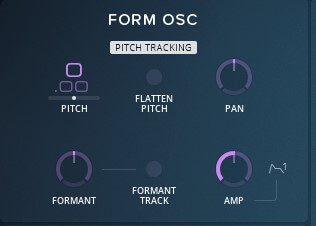
FORM’s oscillator allows you to adjust the pitch, formant, amplitude, and pan position of your sample. The FORM oscillator hosts your entire sample/grain table – not individual grains.
If you need a sustained pitch, that’s easy in granular synthesizers. Pitch tracking allows you to “flatten” the pitch and maintain the pitch of your note.
Final thoughts
Though granular synths vary in functionality, most will utilize the features I’ve listed. In any case, the most important thing to remember is that the tone of the original sound has a huge hand in the timbre of the new sound.
Wavetable synthesis is by far the most popular technique of synthesis. But granular offers a fantastic, creative alternative. These two methods of sound design are very different whilst sharing some characteristics.
So, is granular synthesis your next big sound design adventure?
What are the different types of synthesis?
Including granular synthesis, there are a total of 6 methods of synthesis commonly used in music production today:
- Subtractive synthesis
Subtractive synthesis is the process of removing frequencies from an original signal via filtering to sculpt a new sound. - Additive synthesis
Additive synthesis is all about stacking multiple sine waves together at different frequencies and amplitudes to build a sound. - FM synthesis
Frequency modulation is a method of synthesis whereby the frequency of one signal is modulated by the frequency of another. - Wavetable synthesis
Wavetable synthesis converts a waveform into a morphable “wavetable”, and the wavetable is made up of many “subtables” which oscillate like a regular waveform signal. Then you can modulate the wavetables in numerous ways. - Modular synthesis
Instead of buying an all-in-one standalone synth, you could buy synthesizer modules and design your own modular synth!
